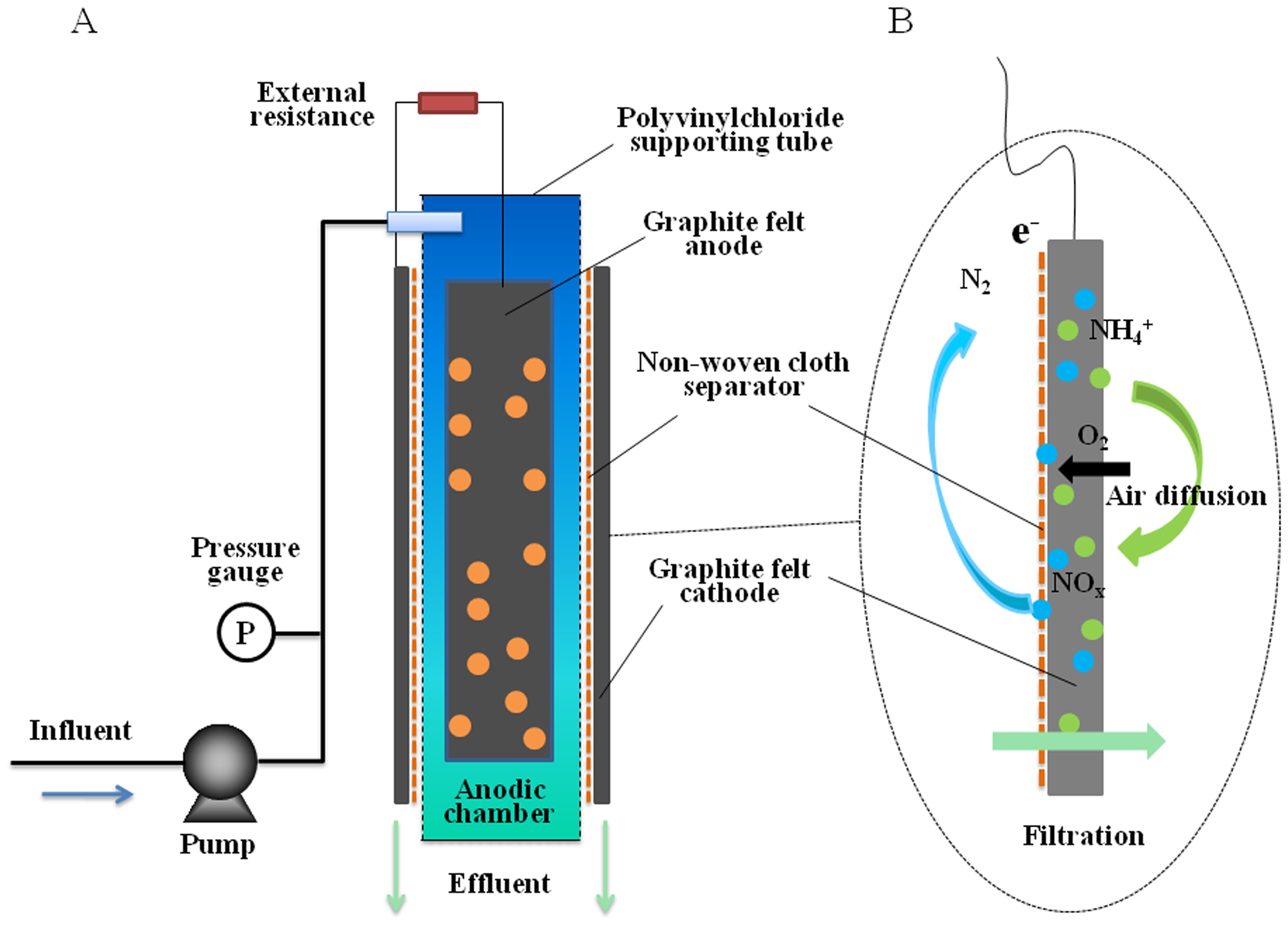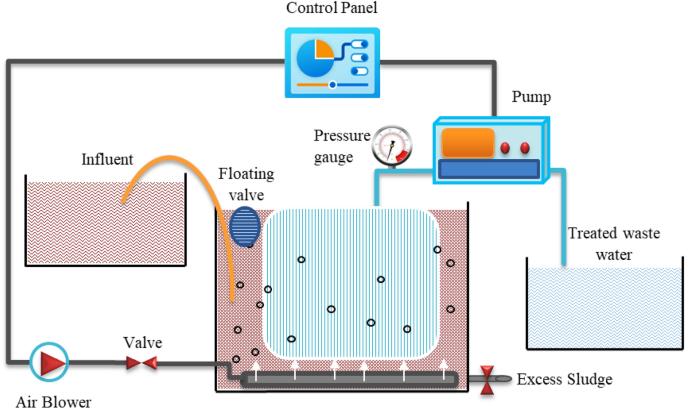Exploring the Environmental Impact of Membrane Bioreactor in Wastewater Treatment
Exploring the Environmental Impact of Membrane Bioreactor in Wastewater Treatment
Blog Article
Exactly How Membrane Bioreactors Are Revolutionizing Water Filtration Systems
The development of membrane layer bioreactors (MBRs) represents a significant improvement in the area of water filtration, merging biological therapy processes with cutting-edge membrane filtration modern technologies. As international water shortage heightens, the role of MBRs in promoting potable water reuse and lasting water management becomes progressively essential.
Overview of Membrane Bioreactors
Membrane bioreactors (MBRs) stand for a considerable development in water filtration innovation, as they incorporate organic therapy procedures with membrane filtering. This combination improves the efficiency of wastewater therapy by utilizing bacteria to degrade organic contaminants while simultaneously utilizing semi-permeable membranes to separate cured water from put on hold microorganisms and solids.
The MBR system typically contains a biological reactor where the microbial population metabolizes impurities, complied with by a membrane layer filtering device that preserves biomass and allows only clean water to pass through. This dual functionality causes higher effluent top quality compared to standard therapy methods. MBRs can be operated in both set and continuous circulation modes, using versatility in layout and application.
Furthermore, MBRs are identified by their small impact, making them appropriate for urban setups with space constraints. Membrane Bioreactor. They likewise enable the recuperation of water for reuse, therefore adding to water sustainability efforts. While MBR modern technology has actually gained appeal in local and commercial applications, its operational complexities and power needs require careful factor to consider during application. On the whole, MBRs are at the forefront of enhancing water therapy efficiency and quality, showcasing the potential for ingenious remedies in ecological management.
Advantages of MBR Innovation
The combination of biological therapy with membrane layer filtering uses various benefits for water purification processes. One of the main advantages of Membrane Bioreactor (MBR) technology is its capacity to efficiently get rid of both organic and not natural impurities, leading to premium effluent. The membranes act as a physical obstacle, protecting against put on hold solids and virus from going through, which boosts the general security and integrity of treated water.
Additionally, MBR systems require a smaller sized footprint contrasted to traditional treatment techniques, enabling more effective room usage. This portable layout is especially helpful in city settings where land is limited. MBRs also show operational flexibility, fitting varying influent qualities and flow prices without significant performance deterioration.
Moreover, the procedure offers enhanced nutrient elimination abilities, specifically for nitrogen and phosphorus, which are important for avoiding eutrophication in getting waters. The decreased sludge manufacturing associated with MBR innovation also equates to lower disposal prices, making it a cost-effective service in the long run - Membrane Bioreactor. In general, the benefits of MBR modern technology setting it as a leading selection for ingenious and sustainable water purification systems, attending to both environmental and financial issues
Applications in Water Filtration
Applications of Membrane Layer Bioreactor (MBR) modern technology in water purification are impactful and varied, dealing with various treatment needs throughout numerous industries. MBRs effectively combine biological treatment processes with membrane filtration, making them optimal for municipal wastewater therapy, commercial effluent administration, and also potable water reuse initiatives.
In metropolitan settings, MBRs are increasingly utilized to boost the quality of dealt with wastewater, permitting conformity with stringent discharge regulations and helping with the recycling of water for irrigation and non-potable uses. Their small style also makes them ideal for urban atmospheres where area is restricted.
Industrially, MBR modern technology is used to deal with procedure water and wastewater, particularly in industries such as food and beverage, pharmaceuticals, and fabrics. By efficiently removing contaminants and put on hold solids, MBRs assist industries decrease ecological influences while recovering useful sources from wastewater streams.
Additionally, MBRs are getting grip in decentralized water therapy applications, where small systems can be released in remote areas or developing areas. This versatility enables neighborhoods to accomplish sustainable water management solutions, boosting access to clean water while reducing reliance on visit the site conventional therapy techniques.
Case Studies and Success Stories

In one more example, a textile manufacturing center in Bangladesh adopted MBR innovation to address its wastewater challenges. site web The system decreased chemical oxygen demand (COD) levels from 1,200 mg/L to much less than 100 mg/L, thus fulfilling regulative requirements and considerably minimizing ecological impact.
The College of Cape Community's MBR setup has proven effective in dealing with greywater for non-potable reuse on university. This task not only saves potable water however additionally functions as an educational model for sustainable techniques.
Moreover, a seafood handling plant in Norway utilized MBR modern technology to treat effluents containing high degrees of natural matter, achieving over 90% contaminant elimination. These study emphasize MBR technology's flexibility and its vital role in enhancing water high quality throughout varied applications.
Future of Water Treatment Solutions
As international water scarcity and air pollution obstacles increase, cutting-edge water therapy solutions are ending up being significantly vital to make certain lasting accessibility to tidy water. The future of water treatment depends on the assimilation of advanced technologies that improve the efficiency and performance of filtration processes. Membrane layer bioreactors (MBRs) are at the leading edge of this evolution, combining biological therapy with membrane filtration to generate top notch effluent ideal for various applications.

Arising fads such as resource healing from wastewater, including nutrients and energy, will certainly better transform therapy facilities into eco-friendly hubs. In addition, advancements in nanotechnology and membrane products assure enhanced efficiency and long life of filtering systems.

Final Thought
Their duty in potable water reuse and sustainable water administration highlights their value in attending to worldwide water deficiency challenges. Proceeded research study and advancement will certainly additionally improve the effectiveness and fostering of MBR technology, ensuring a durable future for water treatment options.
The appearance of membrane bioreactors (MBRs) represents a substantial innovation in the field of water purification, merging biological therapy processes with advanced membrane layer purification innovations. As international water scarcity intensifies, the role of MBRs in facilitating potable water reuse and sustainable water management ends up being significantly vital. They likewise enable the recuperation of water for reuse, therefore adding to water sustainability efforts.As global water deficiency and air pollution challenges escalate, innovative water treatment remedies are coming to be significantly essential to make certain lasting access to clean water. Their duty in drinkable visit our website water reuse and lasting water administration highlights their importance in resolving international water scarcity difficulties.
Report this page